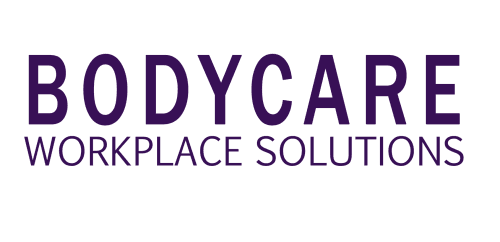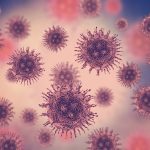Novel Coronavirus: COVID-19 FAQs

Coronavirus (COVID-19) Term Definitions:
WHO – World Health Organisation
CDC – Centre for Disease Control
Pandemic – Worldwide spread of new disease.
Curve – The curve of disease is a theoretical number that researchers use to predict the number of people that would likely contract COVID-19 over a period of time.
Social Distancing – Avoidance of public places and gatherings that would decrease the ability to maintain a 1.5m personal space circumference between individuals.
Self-Isolation – Separating and restricting the movement of infected individuals to avoid transmission and where symptoms are such that they can be managed at home.
Quarantine – Separating and restricting the movement of exposed individuals to avoid transmission and identify symptoms.
Coronavirus – A group term for a number of RNA viruses that cause a variety of diseases in humans and other animals.
COVID-19 – Abbreviation and common term for coronavirus disease 2019. CO (Corona) VI (Virus) D (Disease) 19 (2019).
SARS-COV-2 – The virus responsible for COVID-19. It was previously known as 2019 Novel coronavirus (2019-nCov).
P2 Mask* – Classified to EC (European) testing requirements. Tested to 94% efficiencies.
N95 Mask* – Classified to NiOSH (USA) testing requirements. Tested to 95% efficiencies.
** Both masks are disposable face masks that are designed to filter fine particles from the air when worn correctly. P2/N95 respirators are appropriate personal protective equipment (PPE) for all health care workers involved in aerosol-generating procedures when a patient is confirmed or suspected of having a disease that may be transmitted via the airborne route.
FAQs:
What is the incubation period for COVID-19?
Most estimates of the incubation period for COVID-19 range from 1-14 days, best estimates indicate around five days.
Can I get COVID-19 from my cat/dog?
There is no evidence that a dog, cat or any pet can transmit COVID-19.
How is this coronavirus spread?
COVID-19 can spread from person to person through small droplets from the nose or mouth which are dispersed into the environment when an infected person coughs or exhales. These droplets may land on objects and surfaces that are subsequently touched by another who then transfers these droplets to their eyes, nose or mouth via their hand. People can also catch COVID-19 if they directly inhale droplets dispersed by a cough or sneeze.
How long does COVID-19 live on surfaces?
Currently available studies suggest that coronaviruses may persist on surfaces for a few hours or up to several days. This may be dependent on the environment and surface conditions.
What are the symptoms of COVID-19?
The most common symptoms of COVID-19 are fever, tiredness, and dry cough. Some patients may have aches and pains, nasal congestion, runny nose, sore throat or diarrhea (WHO). These symptoms are usually mild and begin gradually.
What do I do if I develop these symptoms?
If you have a fever, cough and difficulty breathing, seek medical attention. Call in advance to gain instructions on how and where to present.
What are the criteria to be tested for COVID-19?
Due to a global shortage of testing kits, you will only be tested in Australia if your doctor decides you meet the criteria below:
- You have returned from overseas in the past 14 days and you develop respiratory illness with or without fever.
- You have been in close contact with a confirmed COVID-19 case in the past 14 days and you develop respiratory illness with or without fever.
- You have severe community-acquired pneumonia and there is no clear cause.
- You are a healthcare worker who works directly with patients and you have a respiratory illness and a fever.
In New Zealand testing will be based on the criteria below:
- You have returned from overseas in the past 14 days and you develop respiratory illness with or without fever or fever in excess of 38°C.
- You have been in close contact or casual contact with a suspected, probable or confirmed COVID-19 case in the past 14 days and you develop respiratory illness with or without fever or fever in excess of 38°C.
- You have been admitted to ICU/HDU with severe community-acquired pneumonia and there is no clear cause identified.
- You are a healthcare worker who works directly with patients and you have a moderate or severe community-acquired pneumonia.
When do I need to Quarantine?
If you are at risk of COVID-19 infection, but not actually known to be infected you should quarantine according to the relevant government guidelines. Currently the guidelines outline that an individual should quarantine in isolation at home until 14 days have passed if you remain well. This reduces the chances of the infection spreading and applies if you have come back from international or domestic travel in most instances or if you have had contact with someone who is positive. If you become unwell during the 14 days, testing may be done and if positive you move into isolation phase (or into hospital if very unwell). If you are unwell but testing is negative, you should remain in quarantine until the 14 days are up. If well at the end of the 14 days, you may resume normal contact, providing you stay well.
When do I need to isolate?
If you have tested positive for COVID-19 and you are well enough to be looked after at home, you should self-isolate. You may come out of self-isolation where more than seven days have passed since you became unwell, at least two days have passed with no fever, you have had at least one day of feeling better/having no symptoms and/or you have two tests 24 hours apart that are both negative.
Who is most at risk of a serious illness?
Anyone can contract COVID-19 and experience a range of symptoms from mild through to severe. The older population is at great risk of more severe symptoms.
Is the virus treatable?
At this time treatment is focused on symptomatic relief only. There is no vaccine and no specific antiviral medicine currently available to prevent or treat infection.
How can we help prevent the spread of coronavirus?
- Handwashing – Regularly and thoroughly clean your hands with an alcohol-based hand rub or wash them with soap and water. Avoid touching eyes, nose and mouth.
- Social distancing – Maintain at least 1.5m personal space distance between yourself and others.
- Make sure you, and the people around you, follow good respiratory hygiene. This means covering your mouth and nose with your bent elbow or tissue when you cough or sneeze. Then dispose of the used tissue immediately.
- Stay home if you feel unwell. If you have a fever, cough and difficulty breathing, seek medical attention. Call in advance.
Can I go to public gatherings such as concerts and sporting events?
As at today in Australia and New Zealand, you are unable to attend any public gathering, concert or sporting event. These have all been cancelled for the foreseeable future.
What about indoor events like the gym, bars, movies and restaurants?
As at today in Australia and New Zealand, you are unable to attend any gym, bar, cinema, restaurant or cafe. These have all been closed or placed on “take away” only limitations for the foreseeable future.
What about public transport like planes, buses, trains, ride shares and taxis?
All forms of shared transport should be avoided at this time and specific changes to these services are currently in place across Australia and New Zealand.
- Planes – all travel outside of Australia and New Zealand is strongly discouraged at this time. Domestic travel options are available however specific state and country quarantine requirements are in place at this time.
- Buses and trains – all non-essential local public transport should be avoided completely. Some service disruptions apply.
- Ride shares and Taxis – all non-essential ride share, and taxi services should be avoided completely. Ride share services that encourage shared destination between unknown parties has been ceased. Individuals should sit in the back seat of car transport to ensure social distancing.
My workplace has more than 100 people, can I still go to work?
As at today, Australia and New Zealand have instructed any employees that can work at home, to do so. Some workplaces where this is not possible to continue operations, have placed staff on leave. Essential services remain operational and staff attending shifts should exercise all precautions to keep themselves and workmates safe at this time.
Should I be taking my kids out of childcare or school?
As at today, New Zealand and some states within Australia have instructed schools to close for the remainder of the term. Where possible, children should be kept home from school in remaining states that have not had closure and make appropriate arrangements for home-based lessons and supervision.
What about sports and activities?
As at today, sports and activities are limited or cancelled in most cases across Australia and New Zealand.
Should I wear a face mask?
Face masks should be worn if you are unwell and need to travel from home to gain essential medical treatment or medical supplies or have a need to be in contact with another person. Where possible this should be avoided all together.
Face masks will also be worn by health professional when in contact with symptomatic patients in any capacity.
Visit our COVID-19 resource page to download our FAQs and other COVID-19 resources to support your team.
Updated 30 March 2020


